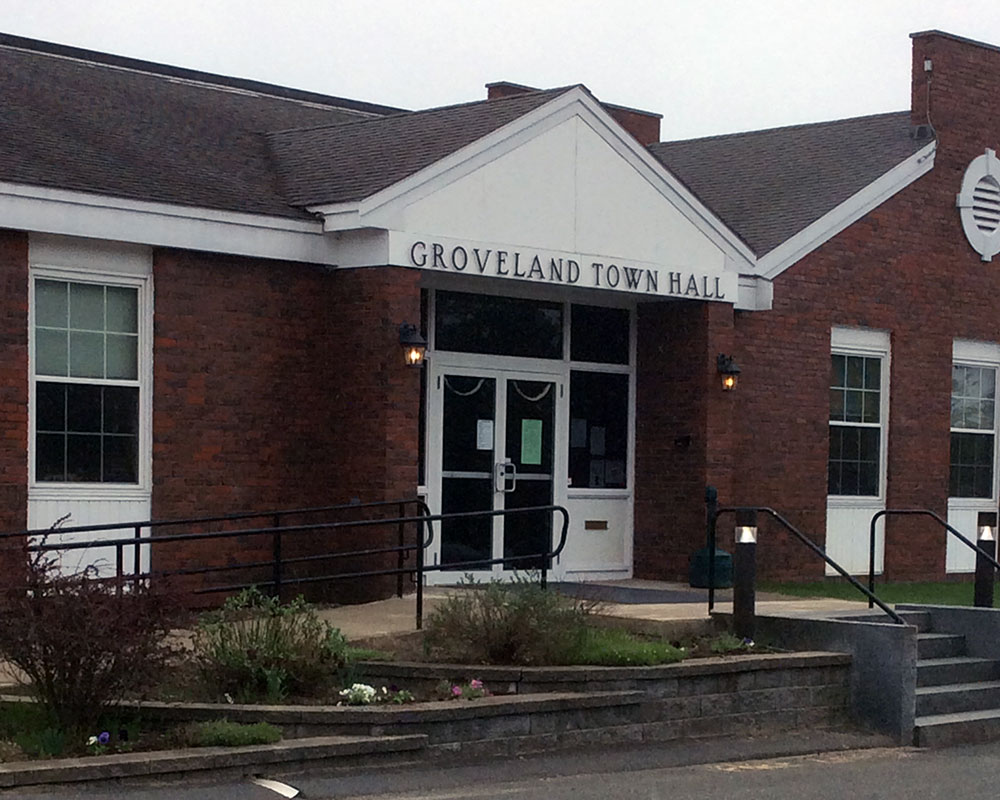What Groveland officials have been sounding the alarm about came to pass yesterday when the U.S. Environmental Protection Agency placed new federal limits on “forever chemicals” in drinking water.
As WHAV reported last month, Groveland is scrambling to identify solutions since its existing well water currently tests slightly above the limits for per-and polyfluoroalkyl substances. Called PFAS, for short. While the town is considering options such as an estimated $22 million water treatment plant or buying water from Haverhill, Clint Richmond, conservation chair for the Massachusetts Sierra Club, made a declaration.
“These costs should not be borne by ratepayers or taxpayers when the problem stems from decades of industries using these toxic forever chemicals,” he said.
Besides Groveland, the Mass. Department of Environmental Protection estimates 95 water systems must address PFAS for the first time under the new federal rules because their latest testing results showed PFAS levels below the state’s current 20 parts per trillion threshold, but above the new federal limit of 4 parts per trillion.
The EPA released what it called “the first-ever national, legally enforceable drinking water standard to protect communities from exposure to the harmful, man-made industrial chemicals. Public water systems have three years to complete the EPA’s initial monitoring requirements, must inform the public of the level of PFAS measured in their drinking water and “must implement solutions to reduce PFAS in their drinking water to levels below the standards within five years,” the EPA said.
The agency added nearly $1 billion in newly available funding through President Joe Biden’s Bipartisan Infrastructure Law will help states and territories implement testing and treatment at public water systems.
The chemicals do not break down entirely in the environment, and exposure to their long-lasting presence has been linked to serious and negative health impacts like thyroid disease and kidney cancer. PFAS chemicals are used in non-stick cookware, food packaging, children’s products, carpets, leather goods, ski wax, firefighting foams and more, and they have leached into drinking water supplies and the soil.
PFAS contamination in excess of the state limit has been found in at least 173 public drinking water systems in more than 86 Massachusetts communities since 2020. The state said Wednesday it is working with 47 public water systems where PFAS levels remain over the standard.
Massachusetts currently regulates six PFAS compounds in drinking water with a cumulative threshold of 20 parts per trillion. The framework the EPA announced would set individual and enforceable maximum contaminant levels for two of those compounds, at 4 parts per trillion. The federal rules would also set maximum contaminant levels of 10 parts per trillion for two other compounds that Massachusetts includes in its regulation, as well as for two compounds that Massachusetts does not specifically regulate.
A spokesperson for MassDEP said the department is reviewing the new federal regulations but added that Massachusetts “will update our standards to align with the new federal level.”
“We have provided more than $504 million in grants and loans directly to communities to combat PFAS contamination and build new treatment infrastructure,” spokesman Ed Coletta said. “The department will continue supporting systems in our cities and towns to keep drinking water safe for all.”
Mindful of the costs associated with PFAS testing, monitoring and remediation, the EPA highlighted potential funding sources in its announcement Wednesday.
The agency said the so-called Bipartisan Infrastructure Law provided $9 billion specifically to invest in communities with drinking water impacted by PFAS and other emerging contaminants, including more than $5 billion in grants specifically for small or disadvantaged communities. There is also another $12 billion in Bipartisan Infrastructure Law money for drinking water state revolving funds.
In late March, Massachusetts regulators finalized $1.4 billion in loans and grants to finance 168 water and wastewater infrastructure projects, including efforts to address PFAS contamination.
Environmental groups and consumer advocates used Wednesday’s announced from the EPA to renew their calls for Beacon Hill to pass a bill to ban the use of PFAS in most products to prevent new contamination, require sellers to inform customers if PFAS chemicals are present in their products, and create new programs to clean up contamination that already exists.
“These chemicals didn’t even exist before the 1940s and now they contaminate water world- wide and are in the blood of every American that has been tested,” Laura Spark, environmental health program director at Clean Water Action, said. “It’s time for Massachusetts to join other states that are protecting their residents by preventing the continued manufacture and sale of products with toxic PFAS.”
Originally filed by Rep. Kate Hogan of Stow and Sen. Julian Cyr of Truro, the bill was rewritten by the Joint Committee on Public Health late last month and the redraft is now pending before the Joint Committee on Health Care Financing.
As originally written, the Hogan and Cyr legislation would also create a PFAS Remediation Trust Fund that would steer grant dollars to municipalities and water systems to help clean up contamination in drinking water, groundwater and soil.
State House News Service’s Colin A. Young contributed to this report.
